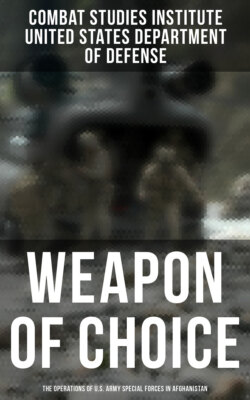Читать книгу Weapon of Choice: The Operations of U.S. Army Special Forces in Afghanistan - Combat Studies Institute - Страница 25
На сайте Литреса книга снята с продажи.
Building Camp Freedom at Double Time
ОглавлениеThe Air Force TALCE unloaded C-17 aircraft as fast as it could, dumping cargo pallets anywhere and everywhere. Just as the flood of arriving personnel and equipment threatened to overwhelm the infrastructure and resources of the Uzbek base, soldiers from the 528th Special Operations Support Battalion (SOSB) arrived. COL Kisner’s first words when he met MAJ Charles Mahoney (pseudonym), A Company commander, were, “Boy, am I glad to see you. We have some problems.” After receiving a quick rundown, Mahoney, remembering the capabilities of the Air Force base support packages, did a quick triage of the K2 maelstrom and dispatched teams to provide urgent care in the critical areas.
Figure 46. 528th SOSB initial logistics chaos.
Military theorist Baron Antoine Henri de Jomini defined logistics as “the art of moving armies.” Since reactivation in 1987, the 528th SOSB had become quite skilled in providing outstanding logistics support worldwide to special operations soldiers. Although operations security (OPSEC) considerations limited details as to where they were going, the U.S. Special Operations Command (USSOCOM) in Tampa had tasked them to establish a ration point and a warehouse for repair parts; to provide office supplies and cold-weather clothing for SOF overseas; and to establish a fuel point. Shortly before receiving medical, veterinary, and mortuary services attachments, the leaders were told that they were going to K2, Uzbekistan; a small element would go to Oman; and there would be no conventional support units to assist the 528th SOSB in country. The number of aircraft determined the final numbers and exactly what equipment would go. The battalion staff and company leaders made last-minute adjustments to ensure that all assigned missions could be performed. “Though we had little or no guidance, we had lots of experience,” remarked First Lieutenant (1LT) Michael Bridgewater (pseudonym). Thus, the 528th SOSB was prepared when it arrived.
Figure 47. K2 cantonment area.
Throughout Camp Freedom, the 528th SOSB’s junior leaders took charge of unspecified tasks and, with little or no guidance, restored a semblance of order to the chaos. As cargo was dumped on the flight line, SSG Celeste Holmes (pseudonym) directed her crew to separate everything into the appropriate logistics classes, from class I to class IX. These soldiers were used to taking the initiative, thinking on their feet, and taking responsibility for their actions. The sergeants decided what was needed, and their decisions enabled the unit to operate independently in theater for two weeks without resupply. They understood the importance of their mission to the national effort to combat terrorism worldwide. Although the 528th SOSB’s mission was to support the Army special operations units, its “can do” attitude and reputation for never turning away soldiers who needed support spread rapidly. Instructed by their company commander to provide as much support as possible, the supply section had a daunting task. Some Air Force elements arrived at K2 without basic subsistence gear like sleeping bags and cold-weather clothing. They had assumed that these items would be issued “in country.” The JSOTF-North and JSOAC staffs quickly demolished the office supplies. SSG Holmes said, “We wouldn’t turn away a shooter at the warehouse,” except for toilet paper, which became a treasured commodity as the camp population rapidly grew. The true measure of mission accomplishment was this comment by SSG Timothy Matthews (pseudonym), 3rd Battalion, 4th POG: “The 528th is a class act.”
